#Fleet defense aircraft
Explore tagged Tumblr posts
Text
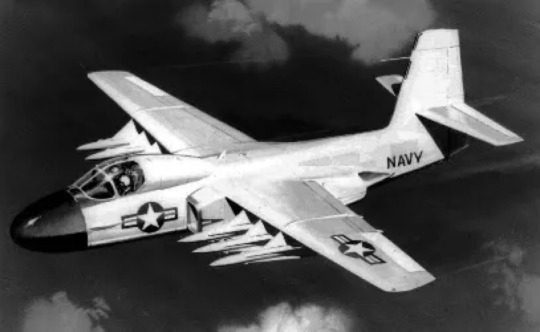
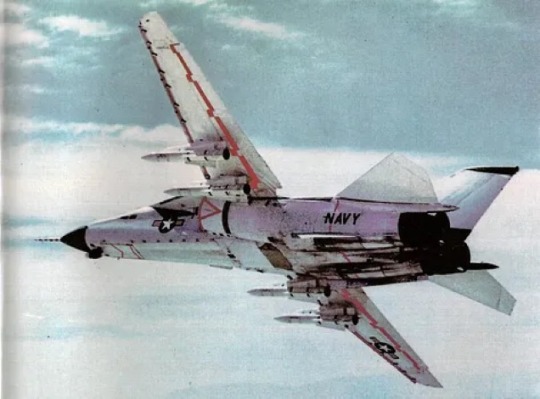
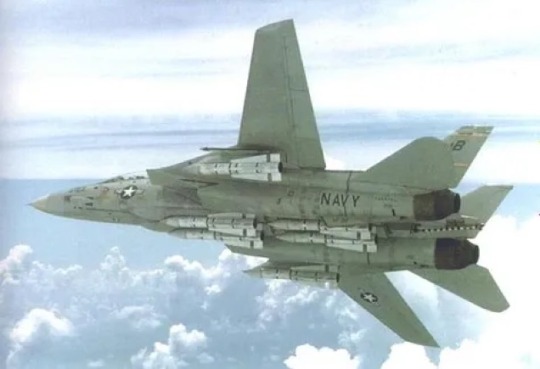
Some of these limitations were exacerbated by the CVW’s fighter-interceptor capability. Improving this was attempted with the F-111B (itself conceptually descended from the F-6D Missileer shown before) and achieved with the introduction of the F-14A in 1974.
@LANTRIN40k via X
12 notes
·
View notes
Text
youtube
#youtube#bomb squadron#hot pit refueling#BTF 25-1#Misawa Air Base#defense operations#aviation enthusiasts#combat readiness#Japan military#US Air Force#military technology#strategic bombers#refueling operations#Japan#hot pit refuel#aviation#bomber squadron#air force#strategic bomber#tactical airlift#defense news#Pacific Air Forces#air power#strategic bombing#bomber fleet#aircraft#bomber#united states air force
14 notes
·
View notes
Link
Dodáváme příběhy. Dáme vám také návody, tipy a triky, jak si vytvořit svůj vlastní.Tento kanál je věnován náhodným věcem, které se objevují na našich stolech.
#japan airspace violation#russian reconnaissance aircraft#japanese warplanes#regional tensions#rebun island#chinese and russian warships#joint military exercise#flares warning#scrambled f-15 and f-35 jets#diplomatic protest#japan's defense minister#extremely regrettable incident#warning operations#military cooperation china-russia#japan-russia conflict#air violation#northern japanese airspace#russian il-38 plane#chinese-russian fleet#japan's security concerns.
0 notes
Text
Falklands 1980’s

#sea harrier#hawker siddeley#vtol fighter#aircraft#fleet defense#royal navy#aviation#carrier aviation#royal navy aircraft#cold war aircraft#fleet air arm
42 notes
·
View notes
Text
Indian Air Force : में 25 सितम्बर को Aircrafts की Handing over Ceremony
Indian Air Force को अपना पहला C-295 Transport Aircraft मिल गया है। Spain के Sailway शहर में हुई Handing over Ceremony में Airbus ने Air Force Chief को पहला C-295 AIRCRAFT सौंपा। Air Force को ऐसे 56 विमान मिलने हैं। इसमें से 16 Spain में बनकर भारत आएंगे और 40 ऐसे विमान भारत में ही बनेंगे। ये विमान Air Force की नाशु Avro फ्लीट की जगह लेंगे। Avro को Replace करने के लिए का नए Aircraft लेने का यह…
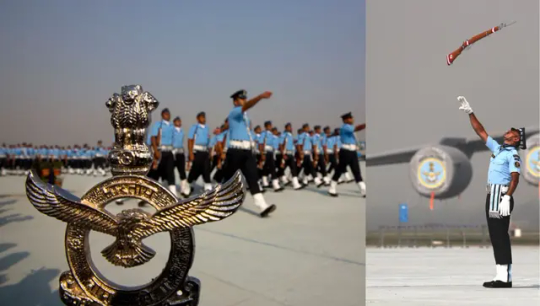
View On WordPress
#Air Force#Airbus C-295 for IAF#Airbus Defense and Space#C-295 Aircraft Features#C-295 Aircraft India#C-295 Aircraft Procurement#C-295 Aircraft Specifications#C-295 for Tactical Airlift#C-295 Military Transport Plane#C-295 Transport Aircraft#C-295 vs. Antonov 32#C-295W Aircraft#Defense Aircraft Acquisition#Defense Equipment Contracts#IAF Transport Aircraft#Indian Air Force#Indian Air Force Aircraft Deals#Indian Air Force C-295 Deal#Indian Air Force Fleet Upgrade#Indian Air Force Modernization#Indian Defense News#Military Aircraft in India
1 note
·
View note
Text

Character Exploration 🍎 Caleb (LaDS)
Caleb is late - and reflects on his situation.
-> an experimental piece to explore writing Caleb
Pairing: Caleb x MC, Caleb's perspective
Rating: T, comparable to game content
A personal vendetta against the fleet, a sabotaged navigational system, an overall messed up patrol flight through the darkness of Deepspace that should have ended more than a day prior.
It all leaves the colonel beyond tired when he finally sets his boot on the busy runway. A sharp gust of wind nearly whips his cap off, which is quickly adjusted in practiced ease. It’s a welcome sensation after days spent in the stagnant recycled air inside the ship. It takes his mind elsewhere for a split second before it returns to the situation at hand.
Hiccups like the recent one have gotten more frequent since the takeover of the Tuum Section.
None of it has been serious or professional enough to become truly worrisome. But the recurrence of similar incidents is wearing his patience thin, steadily gnawing away on his already strained nerves. Worst of all, it costs him precious time.
Time reserved for the one and only person preserving his ceaselessly assaulted sanity.
The colonel leaves Liam to deal with the aftermath, said man all too readily obliging the order despite having shared the taxing experience on ship. The Toring Chip, securely embedded behind the colonel’s right ear, effectively does its job, staving off the onslaught of guilt before it even gets the chance to manifest itself.
After all, there’s no one waiting for his obedient adjutant to come home that night.
Or at all.
'Who cares?' Whispers the chip in a quiet sequence of zeros and ones and preaches logic over emotion in an efficient release of calmative chemicals into the surrounding tissue. No friends, no compassion within the fleet’s hierarchy. Only subordinates and orders.
The chip does not affect, however, that tiny part of grey matter, closely guarded and hidden away behind a barrier of carefully crafted defense mechanisms, with but one desire:
Go home. See her. Finally.
The thought alone is enough to leave behind the 'colonel' for now.
Caleb strips himself of his restrictive uniform in a matter of seconds as soon as he’s boarded his personal aircraft, slipping a comfortable sweater over his remaining undershirt instead.
She loathes the mere sight of the intimidating uniform. He knows by the disdain evident in her gaze whenever it comes across her, whether he wears it or it’s just hanging on the coat rack by the front door. While she’s come to accept things the way they are now, at least he direly hopes she does, she does make no pretense of her despise for it. It leaves an acidic taste in his mouth, knowing that she knows. About the things he does. What he’s involved in. What doesn’t wash off when he showers, no matter how long he remains under the steady spray of water. No matter how hard he scrubs his skin sore.
Nonetheless, she comes to see him every other weekend. Voluntarily.
It soothes his conscience somewhat. That she still seeks him out on her own will. Despite everything, despite his own, now abandoned, aim to keep his distance to guard her safety, he can’t deny that he enjoys her presence. More than anything.
The more the irritation grows that some pesky nuisance dared keeping him away from her for longer than necessary. She had told him she’d arrive Saturday morning. The morning after his scheduled return. Now it’s well past midnight, a day later than planned, and he’s mourning the precious hours lost.
He checks his messages before he departs. A quick glance. To prepare himself.
There’re merely two notifications.
‘I’m at the station’, reads the first one, ‘Where are you?’
The second one, short and crisp: ‘I’m at your place now. Please be safe.’
He'd take any kind of annoyance or accusation over the quiet worry and resignation that echoes in her pick of words.
He can deal with her irritation; with the silent treatment she turns to in her anger that he's endured time and again throughout shared teenage years. What he cannot deal with is her disappointment. Her sad expression when he's yet again failed to keep a promise, no matter how tiny and unimportant it seems in the big picture.
A part of him hopes that she’s long gone to bed when he arrives. That her disappointment morphs into the preferred anger throughout her dreams. That she wakes up staring him down with annoyance in her pretty eyes as soon as she finds him in the kitchen prepping her favorites for breakfast. He can make it up to her then. Pamper her until she forgives him for standing her up.
That thought in mind, he takes to the sky.
The way home - now that he finally allows himself to call it that ever since she’s taken it upon herself to make it one - encompasses merely a few quiet minutes of rumbling thoughts and engine before his aircraft descends through the barriers surrounding his property. The landing is smooth, as it always is, despite the unease brewing steadily in Caleb's chest. The well-known tightness sits at war with a surge of pleasant anticipation to see her as he unlocks the door and steps across the threshold.
The house is as quiet as its owner as he disposes of his leather coat at the door. Quiet enough to make him wonder if she stayed at all.
A treacherous whisper in the back of his mind tells him she would be better off leaving and never coming back. Safe from the danger that lurks in the shadows around his presence. Safe from him and what he has become - Or has always been? He's not even certain of that himself anymore. Blame it on a lack of confidence or the murky spaces left behind by yet another set of (probably) unremarkable memories dissolved into nothing but muddled fog.
But he's too dreadfully egoistic for that. Too dependent on her sweet smiles and fond gazes as his fuel to power onwards.
Too addicted.
It’s despicable in many ways. But guilt and shame have long since faded into the background of his mind. If she comes to him willingly, he tells himself, he may as well allow her and keep her close to shield her from the creeping peril all around.
His silent steps on sock-clad feet carry him through the foyer while he tries not to expect anything, still.
The faint light from the kitchen isle illuminates the living room ahead. He spots half a meal abandoned at the table, cooking utensils already cleaned and neatly arranged to dry in his absence.
A hint that she’s stuck around. He barely shifts his gaze when he spots her barely a few feet away on the couch.
She's haphazardly bundled in a throw blanket, knees tucked to her tummy and hands comfortably curled beneath her chin.
It occurs to him that she must have tried to keep her eyes open until his arrival, regardless of the exhausting mission she had just accomplished herself before setting out to visit Skyhaven. The realization tugs at his heart in an unpleasant way, stirring the captious chip awake again unbidden. He ignores it in defiance and grinds his teeth through the threatening buzz that rattles his mind. Persistent little thing.
Once it quiets down, he redirects his focus to the sleeping girl.
She appears much smaller, curled up like this, much more vulnerable than she truly is these days.
She no longer is the little girl clinging to his sleeve at the faint and distant rumble of thunder. He's well aware that she's grown into a formidable fighter herself. Brave and strong, laughing into the face of danger willingly as she snoops around places that she should definitely not.
His little pip has grown resilient through all the years spent together, blossomed into something bolder and more beautiful than he could have ever imagined.
But that doesn't quell his ever-present desire to protect her. To hide her away from anyone or anything that might dare cause her harm. He's promised her that. So many times, in silence or aloud, whenever her bright mind had been wiped clear, he's lost count. It’s the one vow he will never break, for as long as his stubborn heart keeps beating alongside hers.
He'll keep her safe and sound.
Gentle as he possibly can, he leans down to scoop her into his arms, carry her to bed, lest she wake with a crick in her neck come morning.
Only then does he take notice of the familiar piece of fabric spilling through the gaps between her fingers. Her nose is buried into it, muffling each deep and steady breath she takes.
It’s a worn shirt he'd left on the side of his bed in a hurry. None of the ones he'd brought from Linkon as he left for the DAA. He'd found her snatching those often enough, fresh from the clothesline, claiming them for herself to lounge in. He's used to that, as much as he can be, seeing her in his clothes.
But this one.
This one is recently bought. A necessity now that he gets (and wants) to spend more time out of uniform.
He’d understand she’d grab one of those old, well-acquainted shirts to wallow in memories… but this?
You killed my Caleb.
The echo of her hissed words still stings. It accompanies him, ricochets off the inside of his skull relentlessly. He'd begrudgingly made peace with the fact that she very much rejects who he is now. That she desperately hopes to somehow rediscover the boy that she's known her whole life. But this.
This tiny, unimposing gesture.
He freezes before his fingers touch her sleeping form, emotion welling up, swirling into a dangerous maelstrom of hope and sorrow alike.
A murmur of her name slips past his lips, and she stirs to the familiar sound, a small smile tugging at the corners of her mouth as her sleepy eyes blink open.
Her drowsy gaze finds his in the twilit room and her smile stretches.
"Lebby," she mutters, evidently still half-asleep.
He hasn't heard that one in a while - the age-old nickname kickstarts his brain back into functioning.
"'m here," he affirms, hushed as his unsteady voice allows him to speak, as not to fully rouse her from sleep.
She hums, sounding utterly content, and winds her arms around his neck as he proceeds to pick her up.
Nuzzling her face into his shoulder, she breathes him in, and his mind teeters dangerously on the edge of the cold abyss again.
Inhale.
Exhale.
Resist.
Relax.
This is what it’s all for. He refuses to give in to the persistent chip, denies it access to this one beautiful gain of his whole twisted situation.
Damn the chip. Damn Ever. Damn fucking everyone that dares messing up what he feels for her. He sears the moment into his memory, sealing it securely behind unbreakable barriers.
Her warmth, her scent, her weight in his embrace. This belongs to him and her alone.
"I'll always come back to you," he murmurs and presses a tender kiss to the side of her head. "For as long as I breathe."
The emotional strain only adds to his present exhaustion, the hammering pain within his head as agonizing as ever, and the brief walk to her room grows slow and sluggish. It so happens that, after he’s carefully lowered her onto the mattress, he doesn’t resist her pull when she refuses to let go of his neck.
“Clingy,” he mutters, but doesn’t mean it, as he gives in and lets her topple him over and straight beside her onto the welcoming bed beneath.
It’s far from comfortable; Limbs tangled, her elbow digging into his ribs, his cheek smushed into the cool case of her pillow. Still, he revels in the onslaught of sensation, savors the dull ache that spreads along his awkwardly arched spine. Silence reigns beyond the occasional creak of bones and bed until her voice breaks once more.
She adjusts herself, curls her arms around his bicep instead.
“You’re late, dummy…”
Her soft voice is muffled against his shoulder, barely clear enough for him to grasp.
“But I’m happy you’re home…”
Yeah, thinks Caleb, I am, and wraps his hand around her smaller one.
Enveloped in the shelter of her presence, lastly he yields the steady pull of sleep...
#leaf writes#caleb love and deepspace#love and deepspace#lads caleb#lads mc#lads#caleb x mc#spontaneous writing#character exploration#practice#introspection
22 notes
·
View notes
Text
home base . ch8
"friends who are for the people" - 6.7k words
ultraman: rising (2024). kenji sato x reader
master post. ao3 link.
previous: ch7. "friends who use their phones in bed"
next: [SOON]

When you said you were busy with your own things, you meant it.
You have your own fun when Kenji is not around.
---
Dr. Onda has a special ability to be the most imposing person in the room.
Even in front of a long panel of the most important figures in Tokyo, he intimidates with the glare from his shades and his permanent frown. His second-in-command is much more approachable with his youthful face and calm but reliable demeanor, but Captain Aoshima can only do so much with his digestible powerpoint slides and well-crafted charts to lessen the heavy air of the room.
“...and you can see in this graph, that with your help, the KDF has managed to expand our fleet to tackle airborne kaiju. Our aviators have suffered less injuries due to the fortification of our aircrafts, and we are able to more efficiently terminate kaiju with our updated munitions. Any questions?” Captain Aoshima glances around the room to check whether the board was following.
They only nod, some casting glances towards Dr. Onda as he stood at the side to monitor his assistant’s presentation. The KDF’s board is composed of some of the most decorated war veterans, politicians, and arms dealers in the country, yet all are wary towards the senior researcher.
All except you.
“Captain, I have a question,” You say. You look up from the comprehensive board report they had passed around earlier, neat inside a plain black folio. “You discussed that the updated munitions arming the refurbished planes are necessary for more efficient ejection of projectiles, correct?”
“Yes, Director.”
You swallow.
You don’t think you earned the title compared to the others seated at the long table–this being your first board meeting, after all–but you let it go. They will sense weakness if you do not appear more confident. You continue your line of inquiry. “The report states that we have not introduced new projectiles in the armory within the quarter, yet based on the most recent kaiju attack, I have noticed that your fleets utilized non-lethal tranquilizers on the target. I reviewed the previous reports from the past five years and there has not been any mention about the research and development of such. May I ask why there was this omission?”
Murmurs broke out amongst your fellow board members. You keep your eyes trained at the commanding captain. He does not seem fazed at all by your question; he merely turns to look at Dr. Onda, who nods back, for permission to answer.
“Yes, Director. The tranquilizers were not mentioned in the quarterly review because they were not a recent development nor acquisition. They have been archived in our inventory for a better part of two decades. However, I can assure that our aviation ordnancemen checked prior to its use whether they are still effective as they were when they were first developed.”
You cross-check the provided digital database, manipulating the holographic screen. The inventory displays the potent tranquilizers. You skim over the document, pausing momentarily when you catch a line of text stating ‘Developer: Dr. Emiko Sato.’ You swipe away from the tab.
“Why take out old tranquilizers from storage for this specific kaiju?” You inquire.
“It was imperative for us to take this Kaiju alive.”
At the corner of your eye, you notice the Chairman of the Board stand up from his seat. Of course, as he is also Japan’s Minister of Defense, he has the most interest in increasing the KDF’s productivity. “And for what reason did you feel it was necessary to keep that kaiju alive?! I thought we agreed that the infrastructural costs outweigh the necessity to study these monsters?”
With a flick of his wrist, the Minister pushes one of the holographic screens to the center of the room. It plays the footage of that abnormally small, pink kaiju that ran through the streets a week prior. You see yourself on the screen get picked up, and you get phantom pains on your body as you remember how constricting the hold of that kaiju was. The stares of the other directors stab into your skin as they also recognize you from the footage.
Before anyone else can make a comment, Dr. Onda steps forward. The Minister falls back down on his chair, startled that the man has decided to finally speak after two hours in the boardroom.
“Captain Aoshima, thank you. I will take over the presentation for now.” He commands attention despite not raising his voice. Even if his eyes are covered, even you can feel the wuthering stare he sends towards the Minister. “Minister, while I respect your position as Chairman of the Board, I don’t think it is part of your responsibilities to scold my subordinates. Let your grievances out towards me.”
While the panel is silenced due to fear, you instead are stricken with respect for the older man. You appreciate how he takes care of his workers. Although, you still have your own job to do.
“Very well, Dr. Onda,” you speak up and everyone’s focus is now back on you. “Does this kaiju have anything to do with your current updates on Project Surrogate?”
He actually looks impressed, and you try not to look too pleased about his nod of approval. “Yes. I will move the presentation along towards it.”
The screen in front of you now presents a concise, bulleted summary of action points that Project Surrogate aims to achieve. This isn’t new to the panel, and the project needs no introduction. After all, it has been in development for the past five years, and most of taxpayer money being invested in the KDF has went towards it.
Project Surrogate’s main objective echoes that of the KDF’s original purpose: to locate Kaiju Island. It is hinged on the long-standing theory that Kaijus exhibit homing behavior towards their island of origin. Since it has been notoriously difficult to track adult Kaiju to the island, Project Surrogate hypothesizes that infant Kaiju might make it easier. The KDF has spent nearly half a decade trying to find proof of juvenile kaiju, until they finally stumbled onto a nest.
You have studied all of the declassified information on the project, yet even with your clearance level, you and the Board are kept out of the loop from Dr. Onda’s plans.
“We have seen this slide before,” you say, a bit frustrated as you stare at the screen. “Can we skip towards the project’s developments?”
Bowing slightly to your direction, he acquiesces to your request and switches to the photo of Gigantron, Queen of the Kaiju. Stepping forward, he begins his presentation. “Project Surrogate has made large progress since we have discovered the nest of Gigantron at the town of Oshima, by its coast. It has confirmed for us that kaiju, or in particular Gigantron, do not necessarily lay eggs nor reproduce exclusively in their island. The evidence in the surrounding area suggests that this is not the first time Gigantron has laid her eggs there.”
“Is it possible that Gigantron has natal homing?” You ignore the murmurs of confusion around you, but you do spot a few board members rolling their eyes at your display of proficiency.
You’re trying too hard to impress others, they think. Everything you do is performative. At your core, you’re just as dumb and vapid as everyone says you are.
“Indeed,” Dr. Onda nods your way. “This display of migratory behavior brings us closer towards finding Kaiju Island, as the infant would soon be instinctively motivated to fly away from our territory.”
The slide changes to the baby kaiju, and the pieces begin falling in place for the Board. The egg had hatched, and the kaiju has been alive for a few months at the moment. You raise another question. “Has the child been in KDF custody this entire time? Can you explain why it was allowed to roam the streets of Tokyo?”
“Unfortunately, the egg was stolen from us by Ultraman, and it had hatched under his control.”
Loud, outraged murmurs broke out amongst the board. Ultraman? Isn’t he supposed to be on our side?
“Wait, Dr. Onda,” the Minister says. “So, even after the Tokyo fiasco, Ultraman still has custody over the kaiju?”
“Yes.”
A gruff-looking general shouts “Then doesn’t that mean Project Surrogate is a bust?”
“Hardly.” Even at the face of angry investors, Dr. Onda keeps his cool. He simply changes the slide to show an image of Ultraman cradling the kaiju against his chest while he hangs from the side of Tokyo Tower. Chills run down your spine. It is as if Ultraman was in the room himself, staring down everyone with a righteous fury.
Like a mother holding her child close, baring her teeth at the dangers that creep near.
“Due to Ultraman letting the kaiju loose on the streets, we have learned that the baby is capable of echolocation. It is possible that adult kaiju use echolocation at a frequency our sensors fail to pick up, but this child uses it as clear as day. Once we recapture the kaiju from Ultraman, we can set it free to the ocean and follow it towards Kaiju Island.”
As Dr. Onda finishes relaying the plan to the room, murmurs of approval soon broke the silence. The plan is reasonable, but you still remained unconvinced that he is telling you everything. You open the quarter report again, this time towards the expenditures for Project Surrogate.
“The plan does not seem clear to me yet, Dr. Onda. How sure are we that the KDF will be able to track the kaiju as it navigates through open waters?” You probe.
“I’m afraid I cannot disclose that for now,” He dodges your question.
“And what about the amount of lithium and uranium in the itemized budget? If you wanted to make bombs I would prefer it if you declare it.”
“We are making bombs, that is nothing new at the KDF. That is as much declaration I can make,” he dismisses your concern.
“So you do have a more thorough plan that you are not telling us about?”
“For two decades, the KDF and its Board of Directors have operated together with a strong sense of trust. You might not be familiar with it now, since this is your first meeting with us as a board member, but soon you will be.”
“But—” Shit. You are getting a little frazzled as he points out your inexperience. “Okay, that’s beside the point. What about Ultraman? The continuation of this project hinges on the KDF tracking his location, but he remains an elusive figure to the Japanese people.”
Dr. Onda gestures towards the Minister of Defense. “We will double down our efforts into tracking him, and we are encouraging the people to send to our tip line any sightings of the vigilante. Our chairman has been most helpful in declaring Ultraman persona non grata.”
“With much public backlash,” the Minister comments.
Another board member pipes in. “Ultraman is seen as a Japanese icon. The favorability of KDF has been declining steadily in the past several months, but it has been crashing to the gutter ever since the announcement that Ultraman is wanted.”
The meeting is getting derailed as the Board grows restless with the lack of direction in the KDF, exposed by you. You are starting to wonder whether you should have just sat there and listened like the others were.
Soon it ends, and everyone begins to shuffle out of the board room. You personally bow to each of the board members before they leave, half of them sizing you up but the rest giving you their blessings for being part of the team. Either way, your stomach turns.
You approach Captain Aoshima, and do the same bow towards him. “Thank you for that presentation, Captain. I look forward to seeing more of you in the future.”
“Likewise,” he returns the courtesy, though after he rises from his bow he fiddles with his pockets. “Actually, before you leave, ah– sorry, this is a bit unprofessional.”
You already have a feeling on what he is going to ask, but it still humors you slightly that he is breaking a bit of his respectful decorum that you know him for. You glance around the room, and the only people left are you, the captain and Dr. Onda. At least no one else is there to make fun of what you’re about to do. “Sure, we can take a photo.”
Aoshima brightens significantly. “Thank you, my daughter would be thrilled. Is it okay if you record a greeting as well? It’s her birthday soon.”
“She knows who I am?” Your eyes widen.
He thinks you’re being too modest. “She used to follow you before you deleted your accounts.”
“Then, it’s no problem! Sorry if I might seem a bit awkward. I haven’t done this in a while so I’m a bit rusty,” you laugh nervously.
You take his phone from his hands, angling the camera for a self-photo with him at your side. The recording goes just as smoothly, with you giving a small pep talk on how his daughter should focus on her studies. Captain Aoshima bows in gratitude, glowing with the excitement of a father who will do anything in the world for his kids.
Dr. Onda watches as his assistant leaves the room, leaving you and him alone. Swallowing your nervousness, you turn to the man and give a respectful bow. “Thank you for the meeting, Dr. Onda. The KDF remains safe in your hands.”
His silence makes you a bit more nervous. It is one thing for you to conduct a thorough interrogation during a quarterly board meeting, it is another making small-talk.
“I’ll…be going?” You try to have a smooth exit, but he raises his hand to signal you to stay.
“I was never fond of businessmen meddling with the organization,” he says, matter-of-fact.
“Well…Motsubishi prides itself in our social involvement—”
“Spare me the sales pitch, your father has done a lot of that when he served on the board,” he interrupts you. “I doubt you believe weapons development equates to welfare.”
“We only make it to the KDF,” you immediately rebut.
“Not fond of the dirtier sides of the business? Isn’t this what you’ve studied?” He raises an eyebrow at you.
You pocket your hands into your slacks. “I’m not entirely fond of profiting from war.”
“Would you call our fight against kaiju a war?”
“...You’re testing me.” You click your tongue. “Please, Dr. Onda.”
“You used to call me ‘Uncle’, when you played with Akiko.”
The room grows a little colder.
“Have you seen Hayao lately?” He changes topic, turning away from you.
“Can’t say I have, but I’ve seen him a couple of times since the incident,” you admit.
He gives a hum of acknowledgement.
“His knee is getting better, not that you asked,” you inform him, stepping forward to stand by his side. You look ahead as you speak. “I think…I think Kenji is taking care of him? Not sure, I didn’t get to confirm, but Emiko…before she disappeared…she told me that he flew all the way here just to take care of the Professor. It took a bit but I think they’re finally talking.”
It’s quiet again, for a moment. “And…Ultraman?”
“I…I don’t know who it is now, I’m sorry,” you don’t know why you are apologizing.
Dr. Onda merely sighs.
You turn to face him properly. “He doesn’t blame you, you know. For his knee.”
“I never asked for his forgiveness.” His face is steel, not betraying a hint of emotion. You see your worried face in the reflection of his shades. “Nor do I feel any sort of guilt.”
“You didn’t know he was Ultraman—”
“And even if I did, I still would have ordered the shot.”
You suck in a breath through your teeth.
“And I don’t make it a habit to shoot at superheroes. Ultraman was interfering with an official KDF extraction. It was necessary.” He remains stone-faced.
“You let him go.”
He walks away from you to another side of the room as he dismissively waves you off. “A mistake.”
“Admit it. You saw his crumpled body on the ground and you just let him go.” You follow, hot on his heels.
You nearly ram into him when he briskly stops in his tracks to turn to you. “I saw the crumpled body of my daughter’s killer and decided I wouldn’t stoop down to his level.”
“He is only one man.” You run a hand through your hair.
“Ultraman is not my enemy, but if he proves to be a nuisance that hinders us from achieving some peace in our shores, then I am not against making him one,” he booms. The conviction of his words might have shaken you, but you notice his shoulders sag slightly, defeated.
You cross your arms, tucking them close to your torso. “That’s…that’s one thing I agree on.”
“...Thank you.” You can tell he means it.
“The new Ultraman…he still needs to grow on me,” you divulge. “He kind of acts like some young hotshot. Seems pretty immature.”
“It’ll be easy to track him down then. But Hayao…he must have taught his new protégé all he knows about how to hide himself.”
“Doctor, you know that I am dedicated to help the KDF in anyway I can,” you affirm.
He raises an eyebrow at you. “Even if it means going against your tutor?”
“I think we and Ultraman have the same goal,” you answer. “We all want to be able to keep the people of this city safe. I don’t know how useful I can be to Ultraman’s cause but I know that I can affect real change here in the KDF. Like how Emiko used to.”
He’s a bit unsatisfied with your reply, but his lips almost twitch into a smile at your, as he calls it, misguided idealism. “You should also go by Doctor, then.”
You wince at the title.
“I’ll pass.” Even if you did recently graduate, it feels like a brag. It does not help that most of the internet thinks you’re lying when you discuss your educational background.
“Receiving a doctorate at 26 is no easy feat. You deserve to be acknowledged for it,” he coolly praises you. The flattery is getting to you a bit, but you still avoid letting it seep in.
“Doesn’t seem to matter much to others,” you dismiss his words. “I’ve tried so hard to distance myself from my old image. I deleted all my social media. I have placed full attention into preparing myself for what I’m about to inherit and I’m still…It still isn’t enough.”
Dr. Onda pushes his shoulders back. “The media play against you has been rampant since you were younger. It is hard to push back against such schemes.”
At eighteen, you formally entered society.
At eighteen, you had the world at your fingertips.
At eighteen, your father officially named you as his successor. He did not have much of a choice, given that you were his only one.
At eighteen, you made enemies who to this day are intent that you stay far away from the title Chief Executive Officer.
“My dad’s officially retiring within the month.”
“I’ve received the invitation to your welcoming gala,” he states. “Congratulations. While I’m not fond of public outings, since your father personally requested my appearance, I cannot say no.”
“I need a win.” Your arms fall to your sides, hands balling into fists. “I refuse to be driven out of the company my family built.”
His shades reflect a small flash of light. “Is this the purpose of our chat?”
“Project Surrogate. I need this to work. If the KDF can get stronger public approval I can solidify my position.”
“I can’t guarantee anything,” he warns you. “And I’m not doing this to satisfy anyone’s greed for power. This is for the people.”
“Because of the kaiju, I got separated from my best friend.” You place a hand over your heart. “And he grew up without a father. Believe me. My ambitions are here but I am fully committed to making this work.”
His hands clasp behind his back. “All I ask is for trust— an understanding, that I am using your investments for the greater good.”
You grin. “Where do I sign?”
A/N: hello … I’m not dead :D
And yes you are pro-KDF for now :D I think Dr. Onda is such a cool and well-written antagonist. DYK in early Ultraman he actually does just straight up kill the kaiju. From a utilitarian standpoint, kaiju are an invasive species. They’re not inherently bad but they don’t belong in the environment they are in. (I watch a lot of those lion fish exterminator tiktoks…)
If you saw on my Tumblr I posted a WIP snippet of what was supposed to go into this chapter, but ultimately I decided that maybe having a portion that focused solely on adding more context to who the reader is would help push the story forward. You go by a lot of different names around these parts! But next chapter would have too much Ken to make up for his absence here! The WIP I posted will be moved to ch10 as well :>
Since I’ve already finished a portion of the next chapter and it’s ready to publish in no time, as it’s a direct continuation from chapter 8’s flashback, here’s a snippet of its introduction so you know what’s in store!
——-
You hear a rapid knocking on the door.
You don’t register it at first, your head pounding from waking up too early. The only thing you can sense is Ken’s warm back against your bare chest, your hands around his waist. You press your face against the back of his neck, groaning at the hour. “Kenji, S’noisy.”
You feel his body shift, and he shrugs you off. “Y’face too cold…”
You just bite his shoulder and tug him closer. He lets you.
Soon, the knocking stops, but Kenji’s phone rings from the bedside table. Groaning, he blindly reaches for it to take the call, and you whine when he shifts in your hold. You realize that you won’t be able to get any sleep, so your eye cracks open to check the clock.
2:17 AM.
Now who—
“Kenji? Kenji are you awake? I’m outside your door. Please let me in.”
You both bolt up when you hear Emiko Sato’s voice from the phone. You slap his back to get him moving. “The sofa,” you hiss, lowering your voice.
Both of you struggle to keep quiet as you rush to find your clothes. Ken quickly pulls out the sofabed, and tosses rumpled blankets onto it to give an illusion that he’s been there the entire time. You find the bra he tossed away earlier on top of a nearby lamp. He grabs an air freshener can to spray lightly across the room— not too much for it to be obvious.
Ken opens the door just after you dive back into the covers, pretending to be asleep.
---
lmk if u want to be on the taglist for future chapters ty!
63 notes
·
View notes
Text
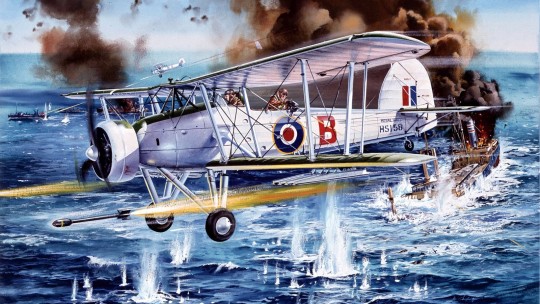
1943 05 Swordfish rockets 816 NAS- Roy Cross
By May 1943, No. 816 NAS was a seasoned Royal Navy Fleet Air Arm squadron with a history of anti-submarine and anti-shipping operations. Originally formed in October 1939 aboard HMS Furious with Fairey Swordfish for convoy protection, the squadron had seen action in multiple theaters, including Norway (1940), the Mediterranean (1941), and the Atlantic (1943). In early 1943, it was operating with Swordfish, likely the Mark II variant, which had been introduced that year with metal lower wings capable of mounting rockets—a significant upgrade for attacking surface targets. The squadron’s base of operations during this period is less certain, but it was likely shore-based at a southern England airfield, such as RAF Perranporth in Cornwall or RAF Manston in Kent, or possibly detached to an escort carrier like HMS Tracker or HMS Chaser, both of which it served aboard at various points in 1943.
The English Channel in May 1943 was a critical theater for disrupting German maritime supply lines, particularly as the Allies prepared for the eventual invasion of northwest Europe. German shipping in the Channel included coastal convoys, E-boats (Schnellboote, fast attack craft), and smaller vessels supporting the Atlantic Wall defenses. No. 816 NAS, with its Swordfish, would have been tasked with targeting these vessels, often under Coastal Command’s direction, to degrade German logistics and protect Allied shipping. The Swordfish’s ASV (Air-to-Surface Vessel) radar, operational since 1941, allowed it to locate targets in darkness or poor weather, making night missions a hallmark of its operations.
Equipped with rockets or bombs (torpedoes were less common against smaller Channel targets), they would patrol a sector between Start Point and Ushant, hunting for a German convoy reported by reconnaissance or Ultra intelligence.
In such a mission, the Swordfish would fly low, around 50-100 feet, using ASV radar to detect a target—say, a group of armed trawlers or an E-boat flotilla escorting supplies from Cherbourg to Boulogne. Upon sighting, the lead aircraft might signal an attack, climbing to 500 feet to fire rockets in a shallow dive, aiming to disable engines or ignite fuel stores. The others could follow with 250-lb bombs, targeting additional vessels or scattering the convoy. Success might be sinking one or two ships (100-500 tons each) or forcing the rest to disperse, with the flight returning under cover of darkness to avoid Luftwaffe interception. Losses were a risk; a Swordfish could be downed by flak or a night fighter, though German air cover in the Channel was waning by mid-1943.
20 notes
·
View notes
Text
FOREIGN Affairs Minister Fred Mitchell said Bahamian troops are currently in the pre-deployment phase for their mission to Haiti and added that their specific role will be determined once all agreements are finalised.
23 Aug 24
The U.S. Southern Command, the Department of Defense's joint military command covering Latin America and the Caribbean known as SouthCom, said it would deliver the mine resistant ambush protected (MRAP) MaxxPros to the capital's main airport via U.S. Air Force C-17 cargo aircraft.
It said the deliveries would start from Friday, adding to an existing fleet of 10 U.S.-provided MRAPs.
The aircraft will also deliver 34 Overhead Gunner Protection Kits, or "turrets," which military-funded contractors will install onto the armoured vehicles to boost their field view during joint operations with national police, it added.
Kenyan troops were forced to withdraw from the Haitian town of Ganthier in late July, marking a major setback in one of the mission's first significant outings from the capital.[...]
The mission's initial 12-month mandate is set to end in October.
24 Aug 24
59 notes
·
View notes
Text
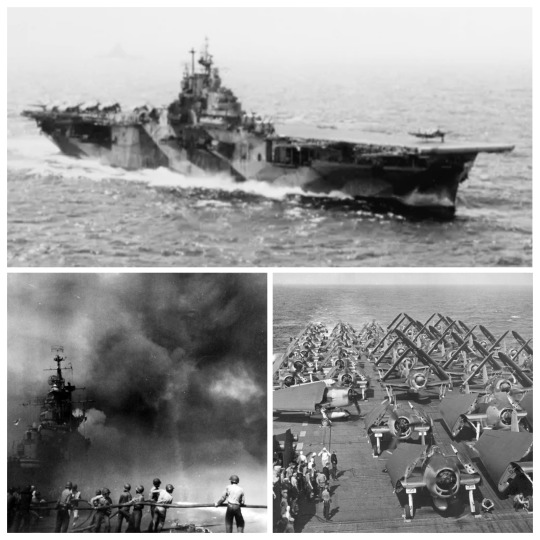
• USS Intrepid
USS Intrepid (CV/CVA/CVS-11), also known as The Fighting "I", is one of 24 Essex-class aircraft carriers built during World War II for the United States Navy. She is the fourth US Navy ship to bear the name. Commissioned in August 1943, Intrepid participated in several campaigns in the Pacific Theater of Operations. Because of her prominent role in battle, she was nicknamed "the Fighting I", while her frequent bad luck and time spent in dry dock for repairs—she was torpedoed once and hit in separate attacks by four Japanese kamikaze aircraft—earned her the nicknames "Decrepit" and "the Dry I".
The keel for Intrepid was laid down on December 1st, 1941 in Shipway 10 at the Newport News Shipbuilding & Dry Dock Co., Newport News, Virginia, days before the Japanese attack on Pearl Harbor and the United States' entrance into World War II. She was launched on April 26th, 1943, the fifth Essex-class aircraft carrier to be launched. She was sponsored by the wife of Vice Admiral John H. Hoover. In August 1943, she was commissioned with Captain Thomas L. Sprague in command before heading to the Caribbean for shakedown and training. She thereafter returned to Norfolk, before departing once more on December 3rd, bound for San Francisco. She proceeded on to Pearl Harbor, Hawaii, arriving there on 10 January, where she began preparations to join the rest of the Pacific Fleet for offensive operations against the Imperial Japanese Navy.
Intrepid joined the Fast Carrier Task Force, then Task Force 58 (TF 58), for the next operation in the island-hopping campaign across the Central Pacific: the Gilbert and Marshall Islands campaign. On January 16th, 1944, Intrepid, her sister ship Essex, and the light carrier Cabot left Pearl Harbor to conduct a raid on islands in the Kwajalein Atoll from January 29th to February 2nd. The three carriers' air group destroyed all 83 Japanese aircraft stationed on Roi-Namur in the first two days of the strikes, before Marines went ashore on neighboring islands on January 31st, in the Battle of Kwajalein. That morning, aircraft from Intrepid attacked Japanese beach defenses on Ennuebing Island until ten minutes before the first Marines landed. The Marines quickly took the island and used it as a fire base to support the follow-on attack on Roi. After the fighting in the Kwajalein Atoll finished, on February 3rd, Intrepid and the rest of TF 58 proceeded to launch Operation Hailstone, a major raid on the main Japanese naval base in the Central Pacific, Truk Lagoon. From the 17th to 19th of February, the carriers pounded Japanese forces in the lagoon, sinking two destroyers and some 200,000 GRT (gross register tonnage) of merchant ships.
The strikes demonstrated the vulnerability of Truk, which convinced the Japanese to avoid using it in the future. Intrepid did not emerge from the operation unscathed, however; on the night of 17th–18th of February, a Rikko type Torpedo Bomber from the 755th Kōkūtai (Genzan Air Group) flying from Tainan attacked and torpedoed the carrier near her stern. The torpedo struck 15 ft (5 m) below the waterline, jamming the ship's rudder to port and flooding several compartments. Sprague was able to counteract the jammed rudder for two days by running the port side screw at high speed while idling the starboard screw, until high winds overpowered the improvised steering. The crew then jury-rigged a sail out of scrap canvas and hatch covers, which allowed the ship to return to Pearl Harbor, where she arrived on February 24th. Temporary repairs were effected there, after which Intrepid steamed on March 16th, escorted by the destroyer USS Remey, to Hunters Point Naval Shipyard in San Francisco for permanent repairs, arriving there six days later. The work was completed by June, and Intrepid began two months of training around Pearl Harbor. Starting in early September, Intrepid joined operations in the western Caroline Islands; the Fast Carrier Task Force was now part of the Third Fleet under Admiral William Halsey Jr., and had been renamed Task Force 38. On September 6th and 7th, she conducted air strikes on Japanese artillery batteries and airfields on the island of Peleliu, in preparation for the invasion of Peleliu. On the 9th and 10th of September, she and the rest of the fleet moved on to attack airfields on the island of Mindanao in the Philippines, followed by further strikes on bases in the Visayan Sea between the 12th and 14th of September. On September 17th, Intrepid returned to Pelelieu to provide air support to the Marines that had landed on the island two days before.
Intrepid and the other carriers then returned to the Philippines to prepare for the Philippines campaign. At this time, Intrepid was assigned to Task Group 38.2. In addition to targets in the Philippines themselves, the carriers also struck Japanese airfields on the islands of Formosa and Okinawa to degrade Japanese air power in the region. On October 20th, at the start of the Battle of Leyte, Intrepid launched strikes to support Allied forces as they went ashore on the island of Leyte. By this time Halsey had reduced the carriers of TG 38.2, commanded by Rear Admiral Gerald F. Bogan aboard Intrepid, to just Intrepid, Cabot, and the light carrier Independence. Between the 23rd and 26th of October, the Japanese Navy launched a major operation to disrupt the Allied landings in the Philippines, resulting in the Battle of Leyte Gulf. On the morning of October 24th, a reconnaissance aircraft from Intrepid spotted Vice Admiral Takeo Kurita's flagship, Yamato. Two hours later, Intrepid and Cabot launched a strike on Kurita's Center Force, initiating the Battle of the Sibuyan Sea; this included eight Curtiss SB2C Helldiver dive bombers from Intrepid. One 500-pound (230 kg) bomb struck the roof of Turret No. 1, failing to penetrate. Two minutes later, the battleship Musashi was struck starboard amidships by a torpedo from a Grumman TBF Avenger, also from Intrepid. The Japanese shot down two Avengers. Another eight Helldivers from Intrepid attacked Musashi again at around noon, scoring two more hits, with two Helldivers shot down. Further strikes from Essex and Lexington inflicted several more bomb and torpedo hits, 37 aircraft from Intrepid, the fleet carrier Franklin, and Cabot attacked Musashi, hitting her with 13 bombs and 11 torpedoes for the loss of three Avengers and three Helldivers. In addition to the loss of Musashi, many of Kurita's other ships, including battleships Yamato, Nagato and Haruna, and heavy cruiser Myōkō were damaged in the attacks, forcing him to break off the operation temporarily. After Kurita's force began to withdraw, Halsey ordered TF 38 to steam north to intercept the aircraft carriers of the Northern Force, commanded by Vice Admiral Jisaburō Ozawa. Bogan correctly perceived that Ozawa's force was intended to lure TF 38 away from the landing area to allow Kurita to attack it, but Halsey overruled him and several other Task Group commanders who voiced similar concerns. Early on October 25th, aircraft from Intrepid and the other carriers launched a strike on the Japanese carriers. Aircraft from Intrepid scored hits on the carrier Zuihō and possibly the carrier Zuikaku. Further strikes throughout the morning resulted in the sinking of four Japanese aircraft carriers and a destroyer in the Battle off Cape Engaño. Halsey's preoccupation with the Northern Force allowed Kurita the respite he needed to turn his force back to the east, push through the San Bernardino Strait, where it engaged the light forces of escort carriers, destroyers, and destroyer escorts that were directly covering the landing force in the Battle off Samar. Kurita nevertheless failed to break through the American formation, and ultimately broke off the attack.
On October 27th, TG 38.2 returned to operations over Luzon; these included a raid on Manila on the 29th. That day, a kamikaze suicide aircraft hit Intrepid on one of her port side gun positions; ten men were killed and another six were wounded, but damage was minimal. A Japanese air raid on November 25th, struck the fleet shortly after noon. Two kamikazes crashed into Intrepid, killing sixty-nine men and causing a serious fire. The ship remained on station, however, and the fires were extinguished within two hours. She was detached for repairs the following day, and reached San Francisco by December. In the middle of February 1945, back in fighting trim, the carrier steamed for Ulithi, arriving by March. She set off westward for strikes on Japan on March 14th, and four days later launched strikes against airfields on Kyūshū. That morning a twin-engined Japanese G4M "Betty" kamikaze broke through a curtain of defensive fire, turned toward Intrepid, and exploded 50 ft (15 m) off Intrepid's forward boat crane. A shower of flaming gasoline and aircraft parts started fires on the hangar deck, but damage control teams quickly put them out. Intrepid's aircraft joined attacks on remnants of the Japanese fleet anchored at Kure damaging 18 enemy naval vessels, including battleship Yamato and carrier Amagi. The carriers turned to Okinawa as L-Day, the start of the most ambitious amphibious assault of the Pacific war, approached. The invasion began on the 1st of April. Intrepid aircraft flew support missions against targets on Okinawa and made neutralizing raids against Japanese airfields in range of the island. On April 16th, during an air raid, a Japanese aircraft dived into Intrepid's flight deck; the engine and part of the fuselage penetrated the deck, killing eight men and wounding 21. In less than an hour the flaming gasoline had been extinguished; three hours after the crash, aircraft were again landing on the carrier. On April 17th, Intrepid retired homeward via Ulithi. She made a stop at Pearl Harbor on 11 May, arriving at San Francisco for repairs on May 19th. On June 29th, the carrier left San Francisco. On August 6th, her aircraft launched strikes against Japanese on bypassed Wake Island. Intrepid arrived at Eniwetok on the next day. On August 15th, when the Japanese surrendered, she received word to "cease offensive operations." Intrepid got under way on August 21st to support the occupation of Japan.
In February 1946, Intrepid moved to San Francisco Bay. The carrier was reduced in status to "commission in reserve" in August, and she was decommissioned on March 22nd, 1947. After her decommissioning, Intrepid became part of the Pacific Reserve Fleet. On February 9th, 1952, she was recommissioned. Intrepid later severed as an attack carrier (CVA), and then eventually became an antisubmarine carrier (CVS). In her second career, she served mainly in the Atlantic, but also participated in the Vietnam War. She was the recovery ship for a Mercury and a Gemini space mission. She was decommissioned for the second time in 1974, she was put into service as a museum ship in 1982 as the foundation of the Intrepid Sea, Air & Space Museum Complex in New York City. Intrepid earned five battle stars and the Presidential Unit Citation during World War II, and a further three battle stars for Vietnam service.
#second world war#world war 2#world war ii#wwii#military history#american history#naval history#naval warfare#aircraft carrier#intrepid museum#pacific campaign#pearl harbor#us navy
39 notes
·
View notes
Text
So I have assigned every driver of the 2024 season with their warships for the F1 x Kantai Collection AU, here we go:
Lewis Hamilton: HMS Diamond (Daring Class, Anti-air guided-missile destroyer)
George Russel: HMS Queen Elizabeth (Queen Elizabeth Class, Aircraft Carrier)
Lando Norris: HMS Lancaster (Duke Class, Guided-missile frigate)
Oscar Piastri: HMAS Waller (Collins Class, Submarine)
Charles Leclerc: Chevalier Paul (I know that is a French fleet but Monaco relies heavily on France for their protection) (Horizon Class, Air-defense Destroyer)
Carlos Sainz: Santa María (Santa María Class, Guided missile Frigate)
Pierre Gasly: Normandie (Aquitaine class, Anti-submarine warfare destroyer)
Esteban Ocon: Aconit (La Fayette class, General-purpose frigate)
Fernando Alonso: Almirante Juan de Borbón (Álvaro de Bazán class, Air-defence frigate)
Lance Stroll: HMCS Montréal (Halifax class, Multi-purpose Frigates)
Max Verstappen: Van Speijk (Karel Doorman class, Anti-Submarine Frigate)
Sergio Perez: ARM Huracan (Huracan Class, Missile Boat)
Valtteri Bottas: Porvoo (Rauma class, Missile boat)
Zhou Guanyu: Zhuzhou (Jingdao Class, Corvette)
Kevin Magnussen: Triton (Thetis Class, Oceanic patrol frigate)
Nico Hulkenberg: Nordrhein-Westfalen (Baden-Württemberg class, Frigate, used for low intensity operations)
Yuki Tsunoda: JS Hyūga (Hyūga Class, Helicopter-carrying Destroyers)
Liam Lawson: HMNZS Te Kaha (Anzac class, Frigate)
Alex Albon: HTMS Chao Phraya (Chao Phraya class, Frigate)
Franco Colapinto: Gomez Roca (Espora Class, Corvette)
Bonus:
Daniel Ricciardo: HMAS Perth (Anzac Class, Frigate)
Jack Doohan: HMAS Canberra (Canberra Class, Landing Heli Dock)
Logan Sargeant: USS Florida (Ohio Class, Submarine)
Why do I make this list? One, one of my hidden hyperfixations is about the country's military and especially the navy and air force and two I need to get this out or else I can't sleep. I'll make another list for the retired drivers warships once I get enough sleep in my vein.
#f1#formula 1#formula one#f1 kancolle AU#lewis hamilton#george russell#lando norris#oscar piastri#lance stroll#fernando alonso#kevin magnussen#nico hulkenberg#franco colapinto#alexander albon#yuki tsunoda#liam lawson#max verstappen#sergio checo pérez#valtteri bottas#zhou guanyu#pierre gasly#esteban ocon#charles leclerc#carlos sainz#jack doohan#daniel ricciardo#logan sargeant#yes i don't regret it#I WORK MY ASS FOR THIS#WANNA KNOW HOW MANY TABS I OPEN FOR THIS LIST?!
26 notes
·
View notes
Text
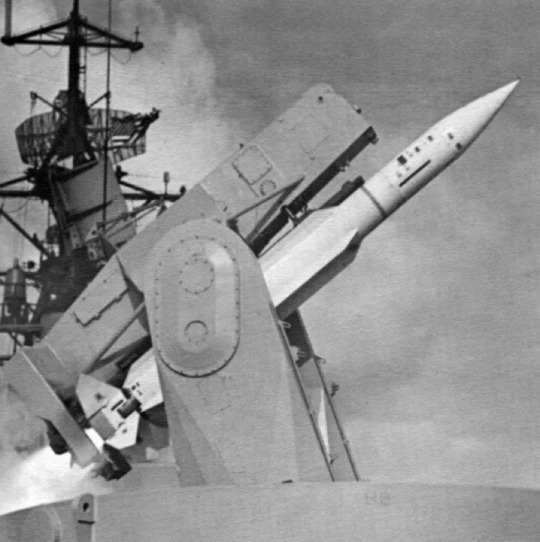
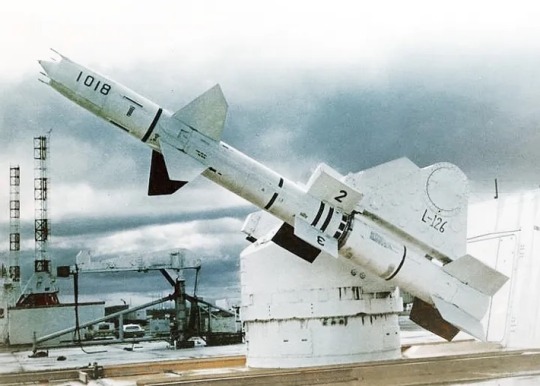
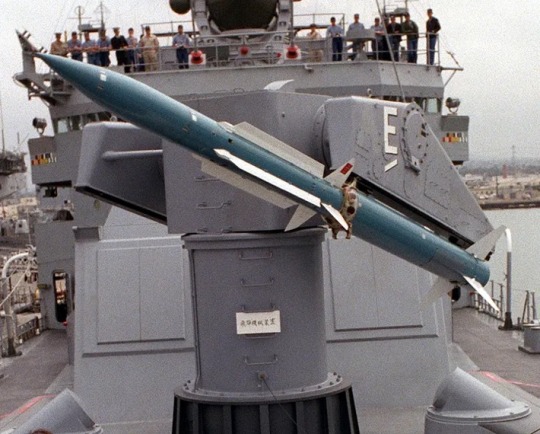
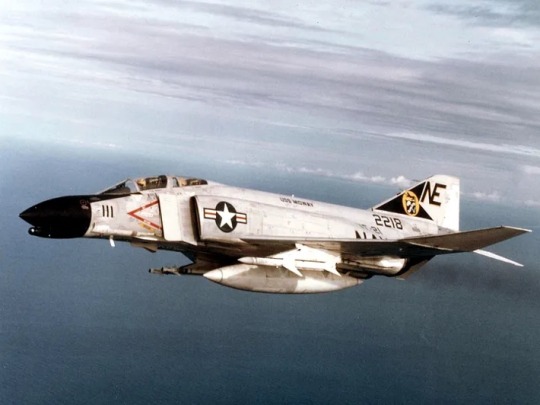
In the 1960s, the USN began studies on how to improve its Carrier Battle Group (CVBG) AAW capability. At the time, the 3 Ts (Tartar, Terrier, and Talos) were the principal surface AAW systems. In the air, the F-4B was the Navy’s primary fighter-interceptor.
@LANTRIN_40k via X
#fleet defense#missiles#F-4b phantom II#aircraft#navy#aviation#us navy#mcdonnell douglas aviation#cold war
16 notes
·
View notes
Text

Coral Sea (June 14, 2005) - The conventionally powered aircraft carrier USS Kitty Hawk (CV 63) and the guided missile cruiser USS Cowpens (CG 63) receives fuel during a replenishment at sea from the Royal Australian Navy auxiliary oiler replenishment ship HMAS Success (AOR 304). Kitty Hawk is currently operating in the Coral Sea off the coast of Australia's Queensland region as part of Exercise Talisman Sabre 2005. Talisman Sabre is an exercise jointly sponsored by the U.S. Pacific Command and Australian Defense Force Joint Operations Command, and designed to train the U.S. Seventh Fleet commander's staff and Australian Joint Operations staff as a designated Combined Task Force (CTF) headquarters. The exercise focuses on crisis action planning and execution of contingency response operations. U.S. Pacific Command units and Australian forces will conduct land, sea and air training throughout the training area. More than 11,000 U.S. and 6,000 Australian personnel will participate. U.S. Navy photo by Photographer's Mate 2nd Class William H. Ramsey (RELEASED)
22 notes
·
View notes
Text
Excerpt from this story from RMI:
1. Batteries Become Everybody’s Best Friend
Battery prices continue to drop and their capacity continues to rise. The cost of electric vehicle (EV) batteries are now about 60 percent what they were just five years ago. And around the world, batteries have become key components in solar-plus-storage microgrids, giving people access to reliable power and saving the day for communities this past hurricane season.
2. Americans Get Cheaper (and Cleaner) Energy
State public utility commissions and rural electric co-operatives around the country are taking steps to deliver better service for their customers that also lowers their rates. At the same time, real momentum is building to prevent vertically integrated utilities from preferencing their coal assets when there are cleaner and cheaper alternatives available.
3. A Sustainable Shipping Future Gets Closer
More than 50 leaders across the marine shipping value chain — from e-fuel producers to vessel and cargo owners, to ports and equipment manufacturers — signed a Call to Action at the UN climate change conference (COP29) to accelerate the adoption of zero-emission fuels. The joint statement calls for faster and bolder action to increase the use of zero and near-zero emissions fuel, investment in zero-emissions vessels, and global development of green hydrogen infrastructure, leaving no country behind.
4. Corporations Fly Cleaner
In April, 20 corporations, including Netflix, JPMorgan Chase, Autodesk, and more, committed to purchase about 50 million gallons of sustainable aviation fuel (SAF), avoiding 500,000 tons of CO2 emissions — equivalent to the emissions of 3,000 fully loaded passenger flights from New York City to London. SAF is made with renewable or waste feedstocks and can be used in today’s aircraft without investments to upgrade existing fleets and infrastructure.
5. More and More Places Go From Coal to Clean
Around the world, coal-fired power plants are closing down as communities switch to clean energy. From Chile to the Philippines to Minnesota coal-to-clean projects are creating new jobs, improving local economic development, and generating clean electricity. In September, Britain became the first G7 nation to stop generating electricity from coal — it’s turning its last coal-fired power plant into a low-carbon energy hub. And in Indonesia, the president vowed to retire all coal plants within 15 years and install 75 gigawatts of renewable energy.
6. Methane Becomes More Visible, and Easier to Mitigate
Methane — a super-potent greenhouse gas — got much easier to track thanks to the launch of new methane tracking satellites over the past year. In March, the Environmental Defense Fund launched MethaneSAT, the first for a non-governmental organization, and the Carbon Mapper Coalition soon followed with the launch of Tanager-1. By scanning the planet many times each day and identifying major methane leaks from orbit, these new satellites will put pressure on big emitters to clean up.
7. EVs Speed By Historic Milestones
This past year was the first time any country had more fully electric cars than gas-powered cars on the roads. It’s no surprise that this happened in Norway where electric cars now make up more than 90 percent of new vehicle sales. And in October, the United States hit a milestone, with over 200,000 electric vehicle charging ports installed nationwide.
8. Consumers Continue to Shift to Energy-Efficient Heat Pumps for Heating and Cooling
Heat pumps have outsold gas furnaces consistently since 2021. And while shipments of heating and cooling equipment fell worldwide in 2023, likely due to broad economic headwinds, heat pumps held on to their market share through. And over the past 12 months, heat pumps outsold conventional furnaces by 27 percent. Shipments are expected to continue increasing as states roll out home efficiency and appliance rebate programs already funded by the Inflation Reduction Act – worth up to $10,000 per household in new incentives for heat pump installations. Link: Tracking the Heat Pump & Water Heater Market in the United States – RMI
9. China Reaches Its Renewable Energy Goal, Six Years Early
China added so much renewable energy capacity this year, that by July it had surpassed its goal of having 1,200 gigawatts (GW) of clean energy installed by 2030. Through September 2024, China installed some 161 GW of new solar capacity and 39 GW of new wind power, according to China’s National Energy Administration (NEA). China is deploying more solar, wind, and EVs than any other country, including the United States, which is — by comparison — projected to deploy a record 50 GW of solar modules by the end of 2024.
10. De-carbonizing Heavy Industry
For steel, cement, chemicals and other heavy industries, low-carbon technologies and climate-friendly solutions are not only increasingly available but growing more affordable. To speed this process, Third Derivative, RMI’s climate tech accelerator, launched the Industrial Innovation Cohorts to accelerate the decarbonization of steel, cement, and chemicals. Also on the rise: clean hydrogen hubs — powered by renewable energy — designed to supply green hydrogen to chemical, steel, and other heavy industries to help them shift to low-carbon production processes.
27 notes
·
View notes
Text

Convair XFY Pogo Experimental Cold War Aircraft. The early 50s 🎥 VIDEO: https://youtu.be/f1ACLMhO9Ak
🎥EXTREME AIRCRAFT VIDEOS: https://dronescapes.video/Extreme
🎥STRANGE PLANES VIDEOS: https://dronescapes.video/Extreme
Following World War II, the need for practical Vertical Take-Off and Landing (VTOL) combat aircraft became a priority, and the Convair XFY-1 Pogo stands out as a prime example of these early efforts. While the British eventually achieved success with the Hawker-Siddeley Harrier, the United States explored numerous VTOL designs. The vulnerability of fixed airfields to enemy attacks, both from land and air, as well as the risks faced by aircraft carriers (highlighted by Japanese kamikaze attacks), fueled this pursuit. Recognizing the limitations of assigning carrier task forces to every defensive need, the U.S. Navy, inspired by the practicality of helicopters demonstrated by the Army Air Forces and Navy during the war, began considering VTOL interceptors for deployment on various non-carrier ships.
This led to Project Hummingbird in 1947, a joint U.S. Air Force and Navy design study. Building upon this data and insights from captured German Focke-Wulf Triebflugel technology, the Navy formally launched a VTOL fighter program in 1948. The objective was to create an aircraft capable of vertical launch and recovery from destroyers, LSTs, fleet oilers, transports, and other large vessels not equipped for conventional planes. The vision was that these VTOL fighters could independently protect their host ships or combine to defend larger naval formations.
After four years of investigation, the Navy awarded contracts to Convair and Lockheed in May 1951 to develop, construct, and test experimental VTOL fighters. Although both companies were slated to produce two prototypes, only one Lockheed XFV-1 and one Convair XFY-1 Pogo were ultimately built. Notably, the XFV-1 never achieved vertical takeoff and landing, largely because the Navy allocated the sole engine capable of both vertical and horizontal flight to Convair. In contrast, the XFY-1 Pogo successfully executed vertical takeoffs and landings, as well as seamless transitions to horizontal flight and back, demonstrating its capabilities numerous times, thanks in part to its innovative design.
#convair#pogo#XFY#Convair XFY#youtube#aircraft#aviation#airplane#dronescapes#documentary#military#aviation history#cold war era#cold war aircraft#cold war history#avgeek#engineering
14 notes
·
View notes
Text

🟥 PRIME MINISTER NETANYAHU ASSESSES SECURITY SITUATION AT IDF HEADQUARTERS
🔴 Prime Minister Benjamin Netanyahu conducted a security assessment at the IDF Kirya headquarters in Tel Aviv. The meeting included Defense Minister Israel Katz, IDF Chief of Staff Lt. Gen. Eyal Zamir, and other senior defense officials.
⚠️ The IRGC Aerospace Forces issued a stark warning: “Iran will shoot down any enemy aircraft that enters Iranian airspace, manned or unmanned. We warn the enemy of any provocation.” This statement follows increased tensions and speculation about potential U.S. or Israeli strikes on Iranian soil.
⚠️ U.S. officials have confirmed that the 5th Fleet has officially entered a phase of "sustained combat operations" within the CENTCOM area of responsibility. This move signals a long-term military posture in the region, likely in response to ongoing Houthi attacks and rising threats from Iran.
❗️ Reports indicate that the U.S. is preparing to escalate its bombing campaign in Yemen, possibly deploying B-1B and B-52 bombers to conduct high-intensity airstrikes following relentless Houthi attacks.
Additionally, discussions are underway regarding potential strikes inside Iran, specifically targeting its nuclear scientists and infrastructure linked to the development of nuclear weapons.
⭕ The Houthis have declared a state of "general mobilization," signaling a significant military escalation. This move follows increased U.S. strikes in Yemen and indicates the group’s intent to intensify operations against both Israel and Western interests.
14 notes
·
View notes